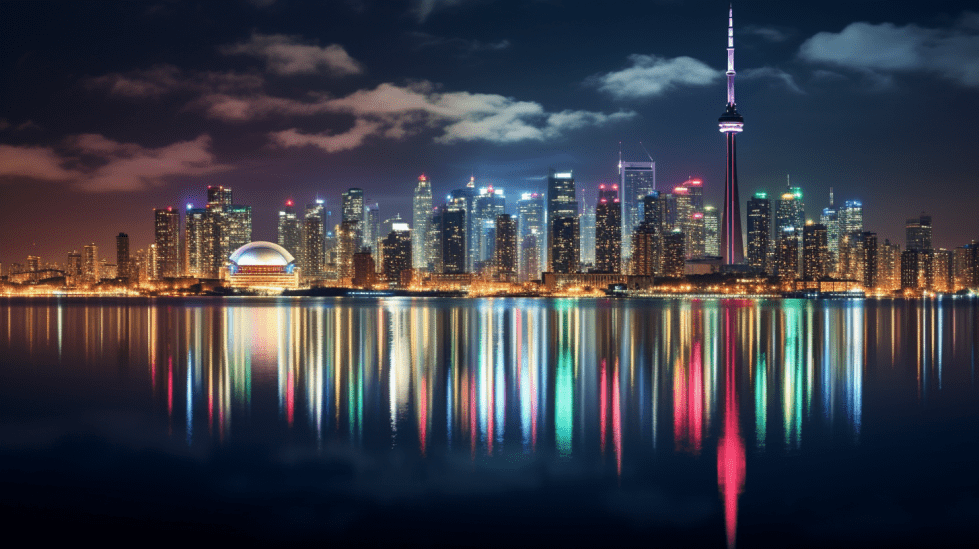Urban Survival Tips
Urban survival is becoming an increasingly important topic as more and more people reside in cities worldwide. Unlocking the secrets of urban survival prepares us to face a variety of threats and challenges in a metropolitan setting. By understanding the urban environment, we can adopt essential skills and techniques to ensure our safety and well-being during unforeseen events, natural disasters, or political unrest.
In our quest for urban survival, it’s crucial to anticipate potential threats and prepare for them adequately. The key to thriving in such a setting is developing an urban survival kit, formulating a comprehensive survival plan, and honing specific skills such as securing safe locations, storing and procuring food and water, and dealing with power failures. Additionally, we must consider the importance of physical health, adaptability, and communication within both our personal networks and the wider community.
Key Takeaways
- Awareness of the urban environment and potential threats is fundamental to successful urban survival.
- Adequate preparation, including developing an urban survival kit and mastering essential skills, greatly enhances our ability to thrive in challenging situations.
- The importance of physical fitness, adaptability, and communication within a community network cannot be overstated.
Understanding the Urban Environment
As a city dweller, I’ve encountered many unique challenges that come with living in an urban environment. It’s important for me, and for others in similar urban settings, to understand how to adapt and thrive in these circumstances.
In urban centers and large towns, one of the primary concerns is the high population density. Resources like food, water, and electricity tend to be more scarce in these environments, and can run out quickly during emergencies. I’ve learned that it’s essential to have a plan in place for times when these resources become limited, and to be vigilant about the potential consequences of overcrowding.
Another key aspect of urban survival is situational awareness. With so many people, buildings, and noise, it’s easy to become lost in the concrete jungle. By paying close attention to my surroundings and being aware of potential threats or dangers, I’m better equipped to handle unexpected situations.
It’s also crucial for me to maintain a low profile in the urban environment. In a large city, there could be individuals with malicious intentions, and it’s best to avoid drawing unwanted attention. This means taking precautions like not flaunting valuables or walking alone in unfamiliar areas at night.
Lastly, navigating an urban area requires efficient and effective transportation. I need to be familiar with the various modes of public transportation available, as well as alternative routes, in case my usual means of travel are disrupted during an emergency situation.
By understanding these aspects of the urban environment and taking the necessary precautions, I can confidently maneuver through the city and prepare for any unexpected challenges that may arise.

Potential Threats in Urban Survival
In urban survival scenarios, there are numerous potential threats that I should be aware of. These threats can be categorized as natural disasters, man-made disasters, or a mix of both. It is crucial for me to understand these potential dangers and prepare accordingly to increase my chances of overcoming an unexpected crisis and support my living conditions.
Natural Disasters are events caused by natural forces, which can severely disrupt human lives and urban infrastructure. Some common examples include earthquakes, hurricanes, floods, and tornadoes. To be prepared for such occurrences, I must develop a comprehensive disaster plan, gather essential supplies, and familiarize myself with local evacuation routes and safe shelters.
Man-Made Disasters are events resulting from human actions or neglect, intentionally or accidentally. Examples of these events include power outages, chemical spills, terrorist attacks, and economic collapse. As these incidents can lead to additional concerns, such as civil unrest and social instability, I should prioritize staying informed, developing a network of trusted contacts, securing my home or workplace, and having a backup plan for essential services, such as acquiring an alternative power source in case of a power grid failure.
Social Unrest and Civil Unrest can arise in response to various issues, including economic crises, political dissatisfaction, or other external pressures. These circumstances may escalate into protests, riots, or even violent conflicts. To navigate these situations, I must maintain a low profile, avoid participating in any provocative actions, and rely on trusted sources of information to determine the safest course of action.
In summary, urban survival presents numerous potential threats, such as natural disasters, man-made disasters, and social unrest. By understanding these potential dangers and being prepared for them, I can have a better chance of surviving and thriving in an urban environment during challenging times.
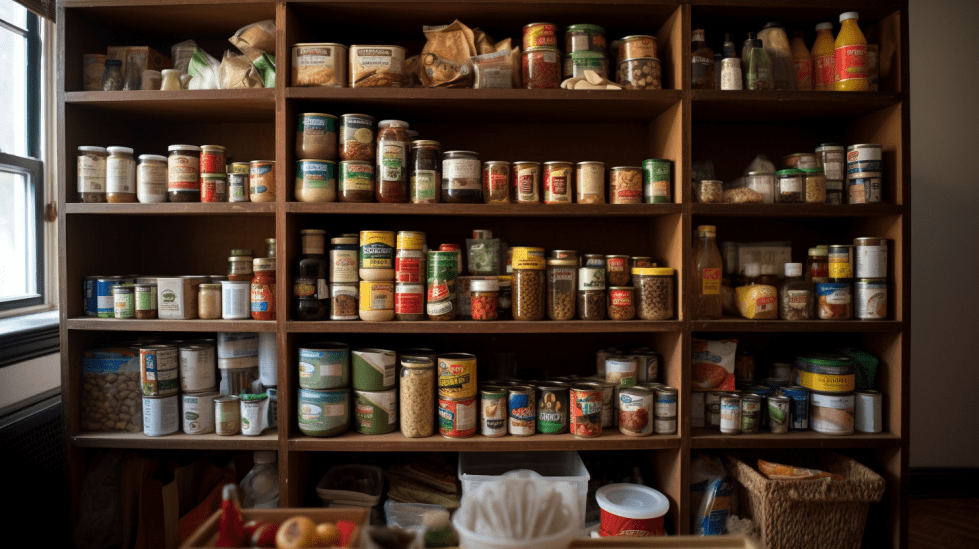
Preparation: Key to Urban Survival
In urban survival situations, preparation is crucial. I have found that one of the most important things to do is to gather essential supplies and create an emergency plan. This not only helps to ensure my safety but also gives me the peace of mind that I can handle any unexpected events.
Having a well-stocked first aid kit is a good idea because it provides me with the necessary tools to address minor injuries and medical emergencies. Additionally, having a supply of non-perishable food items and clean water is vital in case access to those resources becomes limited during a disaster.
Maintaining situational awareness is another key aspect of urban survival preparation. I make a conscious effort to stay informed about potential risks in my area, such as severe weather, crime, and infrastructure disruptions. By staying informed, I am better equipped to adapt and make critical decisions when disaster strikes.
Safety is of the utmost importance when navigating an urban survival scenario. To that end, I regularly practice self-defense techniques and familiarize myself with various emergency response procedures. This helps me to feel more confident and prepared in case a situation arises where I need to protect myself or others.
In conclusion, urban survival preparation involves a combination of gathering supplies, developing situational awareness, and honing personal safety skills. By focusing on these elements, I can effectively prepare for a range of potential emergency situations and ensure that I have the tools necessary to protect myself and others.
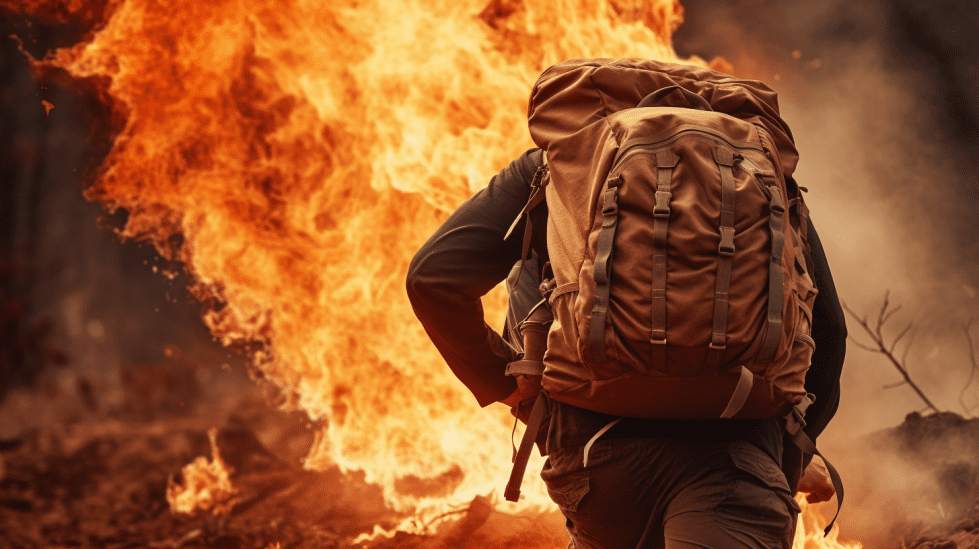
Urban Survival Kits
As an urban dweller, I make sure to prepare an urban survival kit that will help me face unexpected emergencies in the city. My survival kit contains essential items and gear that can come in handy during a sudden crisis. Let me walk you through some of the key items I include in my urban survival kit.
My priority is to have a first aid kit in my survival kit. This contains essentials like bandages, pain relievers, antiseptic ointments, wound dressings, and other practical medical supplies. This first aid kit will help me provide immediate care for myself and others during an emergency.
Another essential I keep in my urban survival kit is a bug-out bag. It’s a well-organized backpack that contains important survival items that could help me survive for at least 72 hours. Some of the items in my bug-out bag include food, water, clothing, and a complete first aid kit.
Additionally, I pack a get home bag that is specifically designed to help me reach my home safely during an emergency. This bag is smaller than my bug-out bag and contains minimal supplies like water, energy bars, a small first aid kit, and a map with multiple routes to my home, among other essential items.
My urban survival kit also contains emergency supplies, which help me manage unforeseen situations. These include things like a flashlight, a portable radio, spare batteries, and a whistle, to name a few.
To ensure access to clean drinking water, I have a water filter and a filtration system in my kit. This allows me to purify water from various sources, like rivers and tap water, making it safe to drink and cook with.
Finally, I make sure to include ferro rods in my urban survival kit. These allow me to effortlessly start a fire in a pinch, which can be crucial for providing warmth, cooking food, or boiling water for purification.
By having my urban survival kit fully stocked and regularly updated, I’m confident in my ability to handle an emergency situation in the city.

Water in Urban Survival
In urban survival situations, finding a reliable water supply is crucial. When city water systems fail, alternative sources become essential. I’ve gathered some tips on how to locate and access water in an urban environment.
First, rainwater is an excellent resource for fresh water supply. Setting up buckets under downspouts or constructing a simple rainwater harvesting system can provide much-needed hydration. Remember to always filter and purify collected rainwater before consuming it. This can be done by boiling it, using a portable water filter, or even adding a small amount of bleach to kill harmful organisms. Mixing 8-16 drops of bleach per gallon of water and letting it sit for at least thirty minutes is an effective purification method, especially when other options are unavailable.
Secondly, tapping into nearby water sources such as lakes, rivers, or ponds is a great way to secure water in an urban environment. Just like with rainwater, it’s essential to purify the water from these sources using the methods mentioned earlier. Be cautious not to rely on seemingly clean water sources, as they may contain invisible pollutants or contaminants.
In some cases, you might find water reserves within city buildings, such as water tanks on rooftops or in the basements of large commercial structures. Please note that accessing these water supplies might require permission from building owners or officials.
Another valuable urban water source is swimming pools. However, exercise extreme caution in using pool water for consumption, as it might contain chemicals that are unsafe when ingested in large quantities. Ensure thorough purification to mitigate any potential risks.
Lastly, being familiar with the basics of urban water scouting can be a lifesaver in survival situations. Urban water scouting refers to the process of locating and obtaining water sources within urban areas. This knowledge would greatly increase your chances of finding reliable water supplies in times of crisis.
In conclusion, having access to clean and safe water is paramount in urban survival scenarios. By understanding where to locate alternative water sources in a city and learning how to purify and filter water adequately, you’ll be prepared for various emergencies.
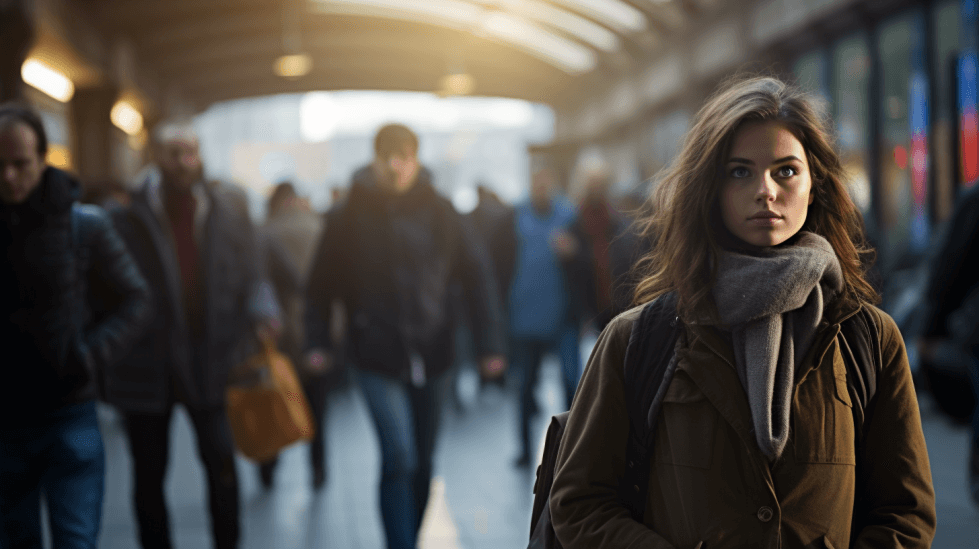
Essential Urban Survival Skills and Techniques
In an urban survival situation, it’s crucial to have a set of essential skills and techniques to increase your chances of success. I’ll share some of the best urban survival tips that I’ve learned over the years to help you navigate these challenging environments.
First and foremost, being aware of your surroundings is key. Use common sense and trust your instincts when evaluating a situation. If something feels off or unsafe, it’s best to avoid it altogether. Keep your eyes and ears open for any potential threats or hazards, and always have an escape plan in mind.
One great skill to develop is situational awareness. This means being able to assess your environment quickly and accurately to determine the best course of action. Familiarize yourself with the layout of your city, including the locations of emergency services, hospitals, and possible evacuation routes. In a crisis, this knowledge could save your life.
In addition to situational awareness, learning basic first aid is invaluable in an urban survival scenario. Knowing how to treat wounds, dress burns, and apply splints can go a long way in keeping you and those around you alive and functional. Consider taking a certified first aid course to gain hands-on experience and practice.
Another essential urban survival skill I’ve picked up is self-defense. Knowing how to protect yourself from potential attackers can greatly increase your chances of staying safe in a dangerous environment. Consider taking self-defense classes or training in martial arts to equip yourself with the knowledge and confidence to handle such situations.
When it comes to urban survival techniques, one of my top recommendations is to have a Get Home Bag (GHB) that contains the essentials for securing your safety. Items to include in your GHB are:
- Water and non-perishable food
- First aid kit
- Basic tools (e.g. multi-tool, flashlight)
- Extra clothing layers and weather protection gear
- A battery-powered or hand-cranked radio for communication
Lastly, don’t underestimate the power of community. Get to know your neighbors and establish relationships with local authorities, businesses, and organizations. In a catastrophe, these connections can provide support, information, and resources that may be critical to your survival.
By incorporating these essential urban survival skills and techniques into your daily life and preparedness plan, you’ll be better equipped to handle any challenges that come your way during an urban crisis.
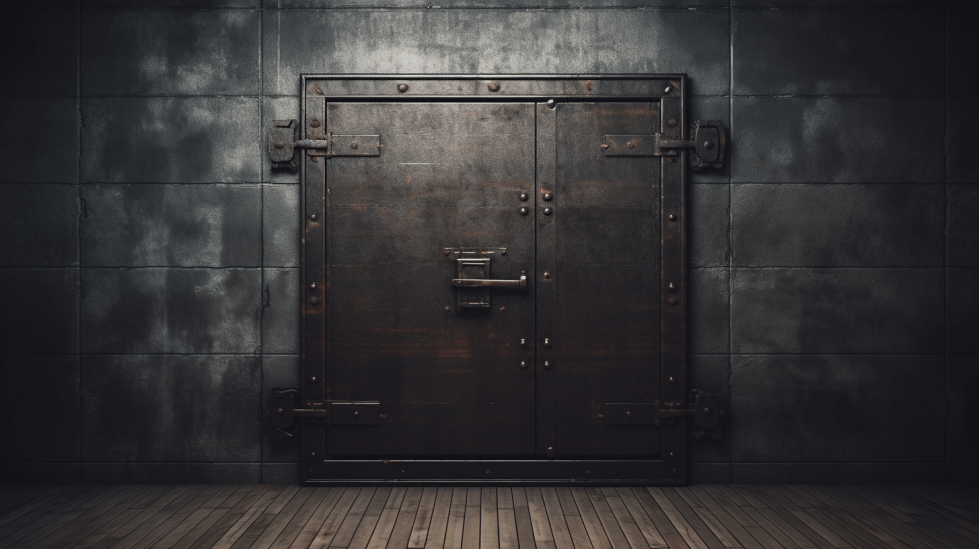
Securing Safe Locations and Routes
When it comes to urban survival, selecting safe locations and planning optimal routes are crucial. As someone who has successfully navigated through different urban landscapes, I can confidently say that it’s essential to know the best pathways to safety and the ideal locations to take shelter in.
In my experience, identifying safe locations starts with understanding the area-specific risks. For instance, during natural disasters, some places may be prone to flooding, while others could face a higher risk of fire. I always prioritize locations that are less susceptible to these threats and preferably have multiple exits. It’s also beneficial to consider buildings with a safe room – a fortified space designed to protect inhabitants during emergencies.
When it comes to choosing your travel paths, avoiding main roads is often wise, as they tend to become congested during disasters. Instead, I recommend mapping out alternative routes that are less congested and still lead to your desired destination. Utilizing alleyways, side streets, and even pedestrian paths can often provide a muchsmooth navigating experience when the usual roadways are impeded.
One technique I often employ is to create a mental map of the area I’m in.Learn the vital points, such as possible safe places and key landmarks. Additionally, having a physical or digital map as a backup is always a good idea, in case the need for alternate routes arises suddenly.
In conclusion, when navigating an urban environment during a crisis, the key is to:
- Identify the safe locations based on area-specific risks
- Consider buildings with a safe room as an added layer of protection
- Avoid main roads and rely on alternative routes for smoother navigation
- Create a mental map of the area, supplemented with a physical or digital backup
By implementing these strategies, I have been able to thrive in challenging urban situations. They are, in my opinion, essential for anyone looking to enhance their urban survival skills.
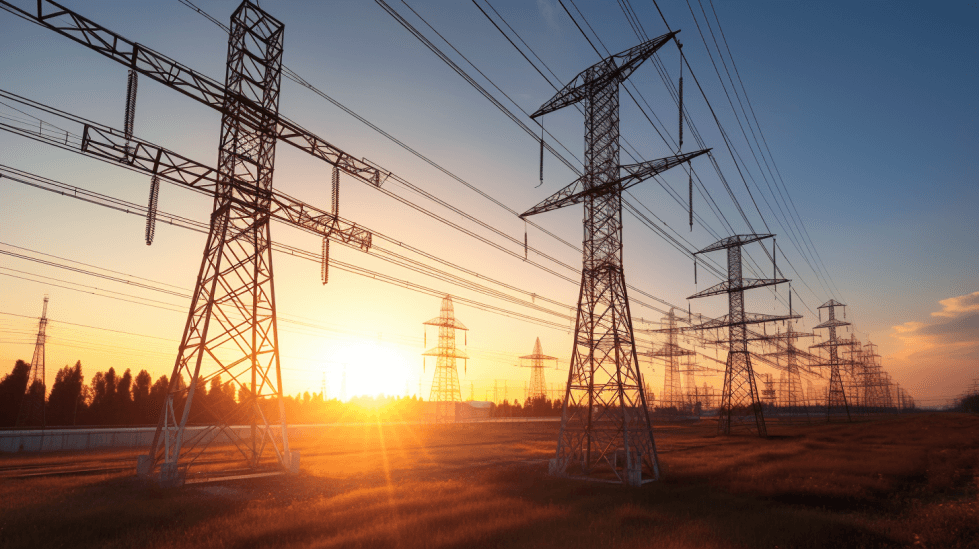
Dealing with Power Failures
In my experience, power outages can be a major challenge in an urban survival scenario. The power grid in cities is complex and susceptible to disruptions from severe weather, accidents, and even malicious attacks. As a city dweller, I’ve learned that being well-prepared for power failures is essential to staying safe and comfortable during these challenging times.
One important aspect I consider when preparing for power outages is having a backup power source. Portable generators and solar panels can provide emergency electricity when the grid is down, but it’s crucial to know how to use them safely to avoid hazards like carbon monoxide poisoning. I always ensure that my generator is properly vented and placed away from my living area, as running a generator improperly can be lethal.
Staying informed during power outages is another crucial factor. Since I might not have access to the internet or television, I keep a battery-powered or hand-crank radio for updates on the situation, weather conditions, and potential evacuation orders. These communication devices should be checked regularly to ensure they are functional and have fresh batteries available when needed.
When it comes to food storage during power outages, I focus on non-perishable items that do not require refrigeration or cooking. Canned goods, dry foods like crackers and cereals, and energy bars are my go-to options. I also keep a manual can opener and a camping stove with fuel in my emergency kit, just in case I need to cook without electricity.
As power outages can impact public water systems, I am mindful of maintaining an adequate supply of clean drinking water. I store a minimum of one gallon per person, per day, for at least three days. This takes into account not only drinking but also cooking and personal hygiene. To purify water, I have a portable water filter and some water purification tablets as backup.
Finally, one of the challenges during power failures is maintaining a comfortable temperature. I ensure that I have proper clothing, blankets, and sleeping bags to keep warm if the outage occurs during cold weather. On the other hand, during hot weather, I plan for ways to stay cool, such as using battery-powered fans, having ice packs ready to place on my body, and staying in the shade to prevent heat exhaustion.
In all, being well-prepared for power failures in an urban environment is a critical aspect of survival. By having backup power, staying informed, stocking up on essentials, and preparing for temperature changes, I can navigate the challenges that come with significant disruptions to the power grid and ensure my well-being during an outage.
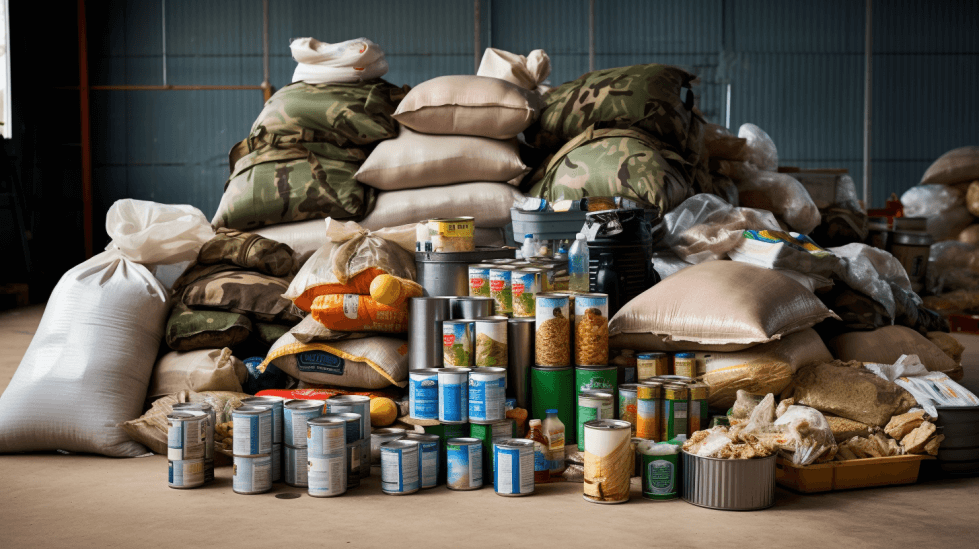
Food Storage and Procurement
When it comes to urban survival, one of the most critical aspects I find is maintaining a reliable food supply. Procuring and storing enough food to last through emergencies can be a challenge, but with careful planning and resourcefulness, I’ve discovered a variety of ways to ensure my food security.
I always prioritize gathering a sufficient stockpile of non-perishable foods. Options like canned goods, dry pasta, and rice have long shelf lives, and can sustain me if fresh food sources become inaccessible. Peanut butter is another fantastic addition to my emergency food stash. It’s an excellent source of calories and protein, and it will keep me fueled when my food choices are limited.
Another essential aspect of food procurement is diversifying my food sources. I learned not to rely solely on grocery stores or restaurants since they may not always be available during a crisis. Urban foraging and gardening are two additional means of acquiring my own food. By growing vegetables in containers or small gardens, I can supplement my diet, reduce dependence on external sources, and ensure access to fresh produce.
Lastly, proper storage is crucial for preserving the quality and safety of my food supply. I need to keep my emergency food in cool, dry, and dark places to prevent spoilage and prolong its shelf life. Employing proper rotation practices by “first-in, first-out” also helps me keep an organized system that efficiently manages my food reserves.
In conclusion, successfully managing food storage and procurement in an urban environment requires foresight, resourcefulness, and adaptability. By following these strategies, I am confident in my ability to maintain a reliable food supply during emergencies and ensure my and my family’s well-being, even in the most challenging situations.

Importance of Physical Health and Fitness
As a person who values both urban survival and overall well-being, I cannot emphasize enough the significance of physical health and fitness. Engaging in regular physical activity not only improves my strength and endurance but also enables me to adapt to various urban survival situations.
One of the primary reasons I prioritize physical fitness is its role in managing health risks. By maintaining an active lifestyle, I effectively reduce the likelihood of developing chronic health conditions, such as heart disease, diabetes, and obesity. The CDC confirms that regular physical activity is vital for managing overall health.
Additionally, physical fitness enhances my ability to perform daily activities more efficiently. When walking or running from one location to another due to an emergency, I can rely on my endurance and strength to help me move faster without getting exhausted. Moreover, a nimble and well-conditioned body allows me to fish through tight spaces and respond quickly in urban environments.
Apart from physical benefits, I also recognize the mental advantages of maintaining fitness. When faced with challenges in urban survival, mental fortitude is just as essential as physical strength. Staying fit boosts not only my mood but also my focus, resilience, and decision-making capabilities.
In conclusion, as an urban survivor, it is crucial for me to maintain my physical health and fitness consistently. A well-rounded physical fitness routine, coupled with persistence and discipline, prepares me for various survival scenarios, ensuring that I can face any obstacles that come my way.

Gray Man Concept and Blend-in Tactics
As an urban prepper, the Gray Man concept is a crucial element in ensuring your safety and success during emergency situations or crises. It refers to the idea of blending into a crowd, appearing unassuming and unremarkable, so as to not draw any unwanted attention to yourself. By effectively becoming the “gray man,” you can maneuver through a city without being noticed or targeted.
I find that one of the key aspects of being a gray man is to focus on how I act, move, look and carry my gear. It’s essential to be mindful of my actions and decisions to avoid standing out. For example, sticking to areas of cover, such as shadows or close to buildings, makes it easier for me to stay inconspicuous while moving through the city. It’s also important to adapt my behavior and walk as if I’m an ordinary person with no exceptional skills or preparation. This helps me appear non-threatening and more like everyone else in the crowd.
As a city prepper, my appearance plays a vital role in becoming a gray man. I try to dress in neutral colors and common clothing that doesn’t garner attention. Avoiding clothing with unique or recognizable patterns, logos, or symbols is crucial. Additionally, I ensure that my gear and any electronic devices stay hidden at all times and don’t draw any attention to me.
Plain sight is another powerful tool that I utilize in my gray man tactics. By appearing average and blending in with the people around me, I can take advantage of the psychological phenomenon known as “change blindness.” This allows me to move, act, and look like the majority of people around me without arousing suspicion. As a result, I can effectively remain unnoticed even when I’m in crowded or high-alert situations.
In summary, adopting the gray man concept and blend-in tactics has significantly improved my urban survival skills. By focusing on my actions, movements, appearance, and acting in plain sight, I can effectively blend in with the crowd and navigate through urban environments without attracting any unwanted attention. This enables me to stay safe, secure, and well-prepared for any situation I might face as an urban prepper.

Communication in Urban Survival
When it comes to urban survival, one of the most important aspects to consider is communication. Keeping in touch with others can help you stay informed, locate resources, and coordinate efforts with people around you. I believe having a communication plan in place is vital, and a key part of that is understanding your options.
Primarily, keeping your cell phone charged and operational is essential for communication during an urban survival situation. With a working mobile phone, I can stay connected with family, friends, and emergency services as long as the cellular network is functional. Therefore, it’s important to conserve battery life and consider having portable chargers or other backup power sources. If network service is disrupted, I can rely on alternative apps like FireChat, which use peer-to-peer connections to communicate without internet access, though these are limited by distance.
In case cell phones are rendered inoperative, it’s wise to be familiar with other communication devices, such as walkie-talkies or CB radios. These devices can provide a lifeline if mobile networks are down, allowing you to communicate with others in the vicinity. As a knowledgeable person, I would recommend learning how to use these devices and store them along with spare batteries in my survival kit.
Another aspect of communication in urban survival situations is staying informed. Listening to emergency broadcasts on the radio, or paying attention to public address systems, can give me vital information about ongoing hazards, evacuation plans, and recovery efforts. A portable radio with both AM and FM bands can prove invaluable in staying up to date with the latest news and advisories.
Finally, I cannot underestimate the value of clear, direct communication with the people around me. Bystanders may have helpful insights, first responders may need critical information, and neighbors may require assistance. Being able to listen, understand, and convey my thoughts effectively in a neutral and composed manner can help both me and others stay safe during a chaotic situation.
In conclusion, effective communication is undeniably important in urban survival scenarios, and I must be prepared with multiple communication methods. Staying connected, informed, and calm can help navigate through the challenges that might arise during a crisis.
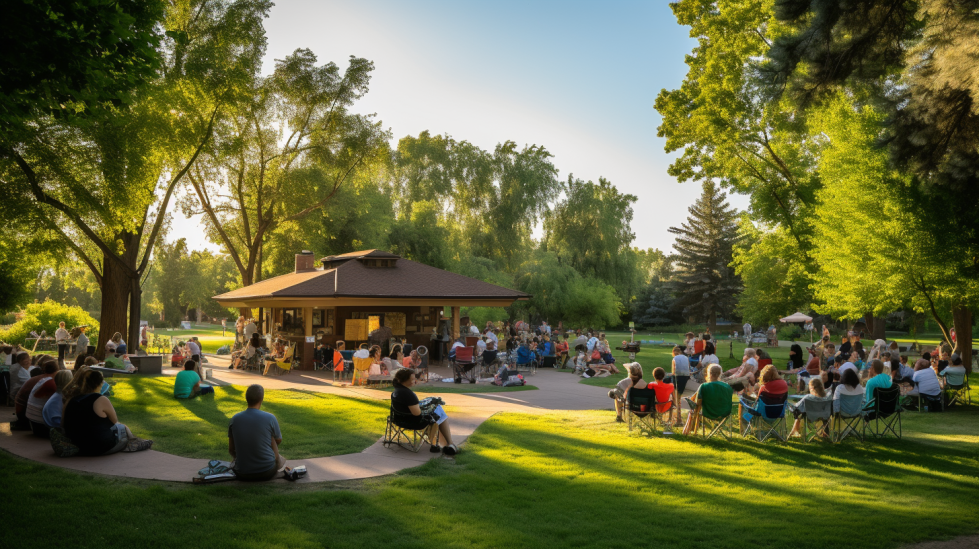
Building a Community Network
In urban survival situations, building a community network can be a vital part of staying safe and secure. I’ve found that establishing relationships with neighbors, family members, and community organizations helps create a strong support system in times of crisis. By connecting with a group of people who share common interests and goals, we can pool our resources and knowledge to better navigate challenging situations.
One way to start building connections is by participating in local events and gatherings. This allows me to meet a lot of people, including potential allies, who might be valuable in emergency situations. I also recommend opening lines of communication with nearby family members, friends, and colleagues. Sharing plans and preparedness information is beneficial for everyone involved.
In addition to forming connections with individuals, it’s also essential to tap into existing community organizations and networks. Local authorities, such as law enforcement and emergency responders, can provide valuable resources and information that can be crucial during a crisis. Moreover, engaging with volunteer organizations, like the Red Cross or neighborhood watch groups, can help strengthen community ties and create a solid foundation for mutual assistance in times of need.
When forming a community network, trust is essential. I make a point to only share my plans and resources with people whom I consider trustworthy. It’s better to have a smaller network of reliable individuals than a large group that may not be dependable when it really matters.
By focusing on building strong connections with neighbors and other community members, I aim to create a robust network that can increase my chances of successfully navigating urban survival situations. The support and cooperation of others, combined with my own preparedness and skills, can create a solid foundation for overcoming challenges in a crisis.
Useful Items in Urban Survival
When it comes to urban survival, I believe it’s essential to have a few useful items on hand that can make a significant difference in a crisis situation. Having these items can provide comfort, security, and functionality during emergencies.
One of the much-overlooked items in urban survival is toilet paper. Although this may seem like a basic necessity, it can become scarce quickly in emergencies, so it’s a good idea to stock up. Toilet paper can also serve several other purposes, such as for starting fires, or as a makeshift bandage in a pinch.
Dollar stores are an excellent place to find affordable and useful items for urban survival. Many essential items like canned food, matches, candles, batteries, and first aid supplies can be found at these stores at low cost. I always keep a lookout for any useful items that can be added to my survival kit without breaking the bank.
Some other items that I find beneficial in urban survival situations include:
- Multitool: A versatile multitool can provide a range of functions, such as cutting, wrenching, or even opening cans.
- Portable water filter: Clean water is crucial in emergencies, and a portable water filter can help turn potentially unsafe water into a drinkable resource.
- Emergency blanket: Lightweight and compact, these blankets can be life-saving, providing warmth, and protection from the elements.
- Flashlight: A reliable, durable flashlight is an essential tool for navigating dark urban environments during a crisis situation.
By having a collection of useful items in urban survival scenarios, I feel better prepared for any situation that may arise. Having these items doesn’t guarantee my safety, but it does increase my chances of overcoming challenges and keeping myself and others safe during emergencies.
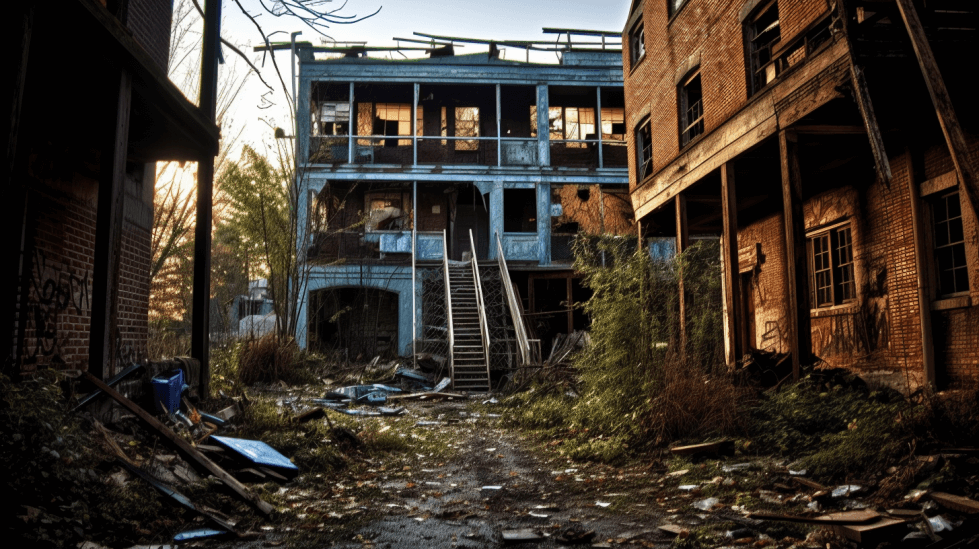
Making Use of Abandoned Structures
When navigating an urban environment, I find that making use of abandoned structures can be a valuable aspect of my urban survival strategy. These locations often provide a safe and discreet place to seek shelter, store my belongings, or plan my next move.
In my experience, identifying an abandoned building can be as simple as looking for broken doors or windows, as nobody works inside a building with broken doors/windows. Nevertheless, it is crucial for me to thoroughly scout the area before entering, ensuring there are no security issues or other potential hazards.
Once inside, I assess any available resources and materials, such as cardboard, discarded clothes, or even the building itself. A good urban survival shelter should be warm enough to protect me from rain, snow, and strong winds when necessary. Therefore, I often gather these materials to improve the shelter’s overall comfort and practicality. In some cases, I may even find myself in an abandoned hotel room that can offer a decent temporary shelter with minimal effort.
As I navigate my urban surroundings, I frequently rely on my ability to improvise and adapt to the environment. When using abandoned structures, it is important for me to remain vigilant and take necessary precautions, such as securing the entrance, staying aware of any signs of intrusion, and always having an escape route planned.
Overall, making use of abandoned structures has proven essential in my urban survival skillset. By taking advantage of these buildings, I gain access to shelter, resources, and increased safety while navigating the chaotic and unpredictable urban landscape.
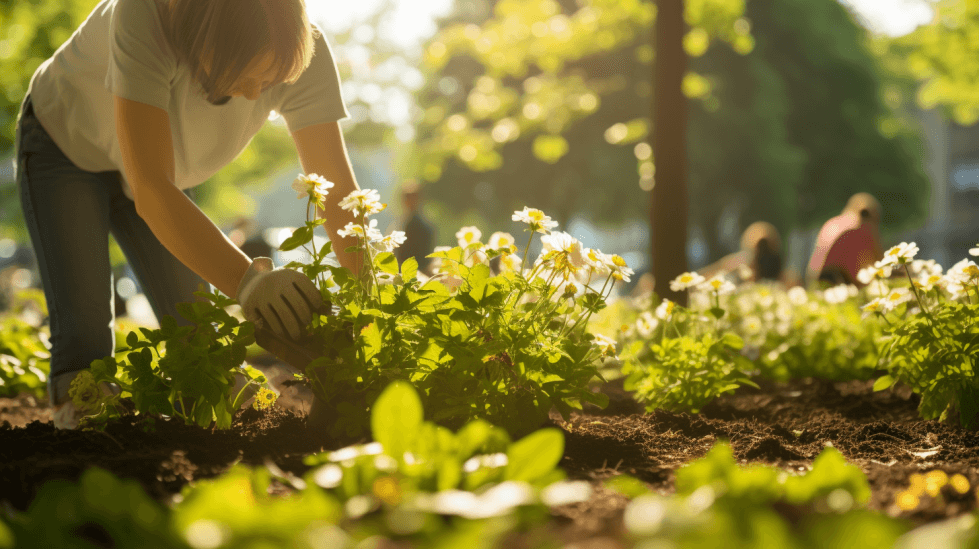
Mastering the Art of Urban Foraging
Urban foraging is an essential skill for city-dwellers looking to increase their self-sufficiency. I’ve found that it involves identifying and collecting wild foods like tree nuts, plant roots, mushrooms, and even flowers that grow freely around the city. With some knowledge and practice, you can turn your urban environment into a source of nutritious and free food.
The first step to successfully foraging in the city is learning how to identify edible plants and mushrooms. One way to do this is by taking a local foraging workshop or using online resources. However, it’s important to never consume anything if you’re not 100% sure of its identification, as some plants and fungi can be toxic.
To avoid contamination, I make sure to only collect plants that are at least 30 feet away from busy roads, as per the recommended guideline. This helps minimize the risk of ingesting pollutants from vehicle exhaust.
When foraging for mushrooms, I’ve discovered that this activity is highly popular among urban foragers, and can serve both culinary and scientific purposes. Be cautious, though, as misidentifying fungi can have severe consequences. If you’re unsure, it’s best to consult an expert or guidebook before consuming any foraged mushrooms.
In addition to knowledge on urban foraging, it’s essential to have some basic urban survival gear. A good pair of gloves, sturdy shoes, a knife for cutting plants, and a container to hold your foraged goods are all important to have.
Overall, urban foraging can not only help you save money on groceries but also provides a greater connection to nature and your local environment. By mastering the art of urban foraging, you become more self-sufficient and resourceful in a city setting.

Benefits of a Homeless Shelter
Homeless shelters are a vital part of survival in urban environments for those who find themselves without a permanent residence. They offer much-needed resources and support to help individuals and families get through challenging times. As a writer with experience in urban survival, I believe that understanding the benefits of homeless shelters can be crucial for those in need.
The primary benefit of a homeless shelter is providing a safe and secure place to sleep. People experiencing homelessness often face dangerous situations on the streets, such as exposure to harsh weather conditions or even criminal activity. A homeless shelter offers protection from these risks, ensuring that individuals and families have a space to lay their heads without fear.
Another key advantage is the access to basic hygiene facilities. It’s tough to maintain personal hygiene when living on the streets, and homeless shelters provide vital services such as showers, toilets, and laundry facilities. In addition to maintaining cleanliness, these facilities contribute significantly to an individual’s physical and mental health.
Homeless shelters also offer essential support services to help individuals and families transition back into stable living situations. These services can include case management, job training, and assistance with obtaining identification documents. By providing practical survival skills and support, homeless shelters make a significant impact on the lives of those experiencing homelessness.
Moreover, shelters often provide access to food and clean drinking water. While it’s not always easy to find such resources on the streets, homeless shelters ensure that individuals and families have nourishment to maintain their health and strength.
Finally, a homeless shelter can be a valuable source of social support and a sense of community. The feeling of belonging and being part of a group can help improve mental well-being in times of struggle. The support from staff and fellow shelter residents can prove to be invaluable in helping individuals move forward.
In conclusion, homeless shelters play a crucial role in survival for those living on the streets, providing safety, resources, and support to help people navigate through difficult times.
Frequently Asked Questions
What are essential urban survival items?
In my experience, some essential urban survival items include a multi-tool, flashlight, portable water filter, and a first aid kit. A multi-tool can help with various tasks, while a flashlight assists in navigating dark spaces. A portable water filter ensures access to clean drinking water, and a first aid kit is vital for addressing injuries or illnesses.
How to find safe shelter in a city during an emergency?
When looking for shelter, my priority is finding locations that offer protection from the elements and possible threats. Buildings with sturdy construction, few entry points, and ample escape routes are preferable. Abandoned houses, schools, or churches are good options, but always make sure to stay vigilant for potential risks.
What are some urban water and food sourcing techniques?
In urban scenarios, I utilize available resources such as functional faucets, rainwater collection systems, or even swimming pools to collect drinking water. However, proper purification is crucial, so a portable water filter is necessary. For food, I focus on grocery stores, abandoned homes, or urban foraging for edible plants to sustain myself.
How to maintain personal safety in a crisis?
Maintaining personal safety in a crisis is essential, and I do this by being aware of my surroundings, keeping a low profile, and avoiding unnecessary risks. It’s also crucial to have self-defense skills and tools when confronted by potential threats.
What are effective communication strategies during urban disasters?
During urban disasters, I rely on multiple communication methods, such as using my cell phone for as long as it’s functional, carrying a battery-operated radio or walkie-talkie, and being familiar with emergency alert systems. Using various communication channels helps me stay informed about the situation and maintain contact with others.
How to navigate through the city during an emergency?
In the event of an emergency, I prioritize safe and efficient navigation by staying updated on the situation through news or emergency broadcasts while being aware of any roadblocks or hazards. Familiarizing myself with the city’s layout and understanding alternative routes ensures a smoother journey during an emergency. If possible, traveling with a map, compass, or GPS helps in navigating unfamiliar areas.


